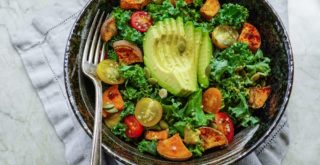You’ve likely been told for your entire life that you should eat more vegetables. Parents, teachers, and even your doctor has likely brought it up when the discussion of nutrition arises. After all, these natural goodies come in an array of colors and flavors, but also contain a spectrum of nutrients as well as fiber. These are integral to your good health.
Why Eat More Vegetables in Winter?
Interestingly, many people find that their veggie intake drops during winter months. Even people who eat tons of fruits and vegetables during the summer don’t eat as much when the weather gets cold.
When you think about it, it’s simpler to add a nice fresh salad to each meal during the summer because it appeals. A plate of cold veggies and dip makes a great snack when it’s hot out. However, when the temperature plummets, the appeal of cold vegetables drops. We tend to crave heavier, richer foods, which often consist of meats, poultry, grains and starches.
Therefore, while it’s a good idea to eat more vegetables overall, it can be a particularly helpful goal in the winter. It’s at that time when we’re least likely to naturally grab for a veggie option at meal or snack time.
What Veggies Taste Best in Winter Months?
Even if there isn’t anything growing in the snow-covered fields where you live, there are still certain veggies that simply taste better in winter months. These are often the ones that grow in greenhouses, that grow in more local areas that get just slightly warmer weather than you do, or foods that simply store longer. This means that when you want to eat more vegetables in the wintertime, not everything in your produce aisle is created equal.
The next time you head into your supermarket, keep your eyes open for lots of flavors and colors. These will help you to make it more appealing to eat more vegetables. Consider the following as highly appealing winter options:
- Broccoli
- Cauliflower
- Bell peppers
- Carrots
- Squash
- Kale
- Rutabaga
- Parsnips
- Mushrooms
These choices will often suit winter flavors very well. Even if you choose to eat a heavy stew, load it up with lots of additional vegetables from the list above. That way, you’ll enjoy the flavors you love most in the winter but will take in far more veggies with every bite.
Make your goal to eat a minimum of five servings of vegetables per day. This isn’t difficult at all when you have one at each meal and for your snacks, too. If you have two in a meal and at least one in the rest of your meals and snacks, it’s nearly guaranteed that you’ll meet that minimum or even beat it!




















